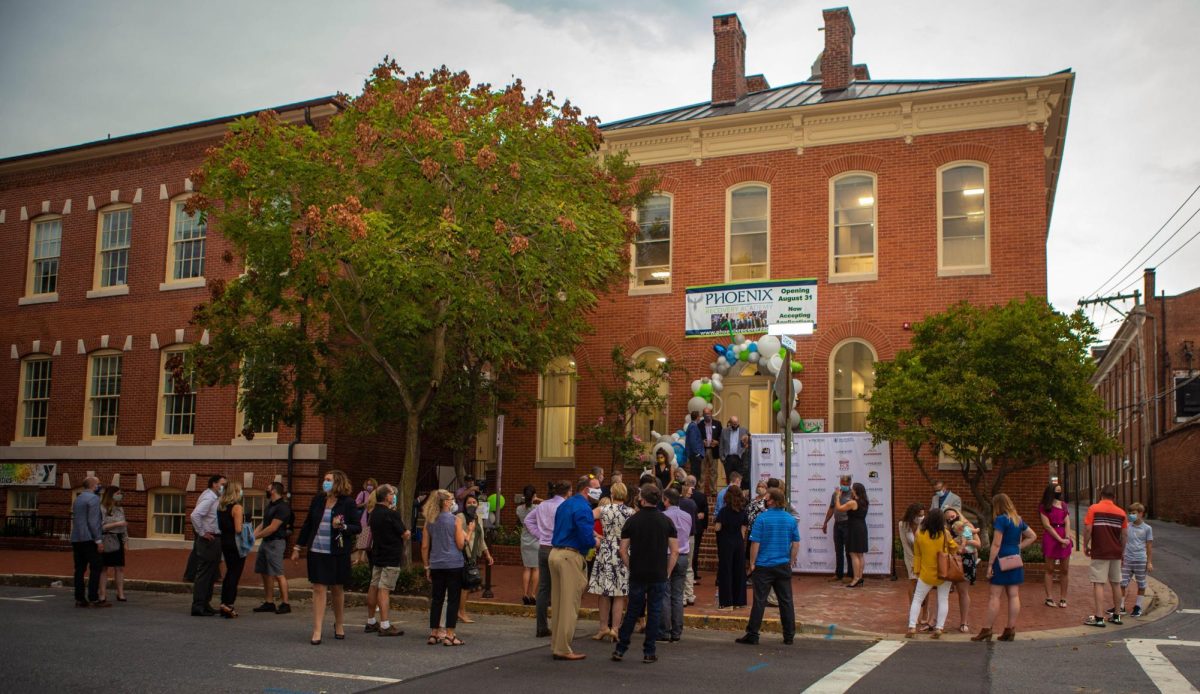Efforts to make River Road safer continue, yet slowly
September 14, 2021
This story was published in print during the 2020-21 school year.
At 11:28 a.m. on April 19, a Bethesda man passed away after he was involved in a fatal motorcycle accident at the intersection of River Road and Beech Tree Road. Nine months prior and less than a mile away, motorcyclist Scott Emerson Hess was killed on the same road while traveling in the same direction. And in 2016, three members of the Buarque de Macedo family lost their lives on their way to a Whitman school play — only two miles away from the most recent collision.
The grief and fear attached to each fatal accident on River Road prompted demand for effective solutions. However, after each crash passed through the news cycle, discussions of roadway safety slowed and action typically ceased — until the next collision. Today, the pattern of fatal crashes on the 1.5-mile stretch of River Road from Braeburn Parkway to Burdette Road has become a morbid reminder of the local government’s failed efforts to slow drivers down.
Since the 2016 crash that devastated the Whitman community, both state and county authorities have attempted to implement speed reduction measures to enhance pedestrian and driver safety.
“There’s two different ways we look at reducing crashes,” said Montgomery County Police Department Collision Reconstruction Unit Supervisor Eli Kinser. “We look at how we can change our enforcement priorities, and we look at traffic engineering.”
While traffic enforcement aims to ensure driver compliance through existing laws and traffic signals, traffic engineering focuses on creating a roadway environment beneficial to driver safety through new traffic signals, lane designs and physical speed barriers.
In Dec. 2018, the Maryland State Highway Administration first approached the River Road task from an enforcement standpoint by lowering the speed limit from 45 mph to 35 mph. Robert Owolabi, Maryland’s Third District Transportation Engineering Manager, was involved in the decision to change the speed limit, and he believes that while the measure won’t stop all speeders, the change will effectively slow down the average driver.
“While some motorists will try to drive at high speeds no matter what, others can lose focus and find themselves driving at a higher speed than intended — especially when there is less traffic around them on the road,” said Owolabi. “Speed limit reductions are intended to lower the potential for more severe crashes, and lower speeds provide more time for motorists to react to unsafe conditions.”
The state instituted the speed reduction west of the Capital Beltway, where the majority of fatal crashes have occured. Yet nearly three years after the transition, many community members believe that the state has taken the wrong approach.
“River Road is a major road and there are a lot of people [who want to get places], so the speed of 35 mph isn’t really conducive to how that road flows at any given time,” said sophomore Rebecca Levy. “People simply ignore it.”
Although the disregard for speed limits isn’t uncommon on many Bethesda roads, River Road poses a unique danger due to its linear design, experts say. The two-lane road lacks physical barriers to speed — known as traffic-calming devices — like road curves, widened medians, speed bumps, narrower lanes and sidewalk extensions. These devices deliberately increase the difficulty of driving, forcing safe drivers to slow or come to a complete stop in dangerous areas, especially at times of heavy traffic.
“River Road is heavily used by commuters but has much less traffic volume on it during non-peak periods,” Owolabi said. “While River Road is well designed for the larger volumes of traffic it sees during rush hours, it’s [too straight] for these non-peak periods, leading to higher speeds and less safe conditions.”
According to a 2021 Washington Post report, the pandemic has only exacerbated the area’s speed problem. The report found that in the early months of lockdown, average rush hour speeds on the Capital Beltway rose from 27 mph to almost 70 mph. The dramatic rise in speed has had grave consequences: Despite a 68% reduction in DMV road use from 2019 to 2020, traffic fatalities have increased over 20% from pre-pandemic levels.
Speed is a large factor in the severity of crashes, Owolabi said. In the past year, the county recorded almost 160 speeding violations at the site of last month’s fatal motorcycle collision — which may indicate that county leaders and developers have overlooked warning signs. However, MCPD said that these violation reports are part of the department’s high-visibility enforcement strategy. The strategy employs greater use of speed sensors, collision data and enforcement data to identify specific locations that would benefit from a conspicuous police presence, in hopes of catching speeding drivers and changing dangerous behavior, Kinser said.
“We go out and do the enforcement, evaluate and then come back periodically,” he said. “You don’t want to tell people when you’re going to be there because the idea is to force a behavioral change.”
After the deployment period, the department uses speed sensor data to evaluate the impact of the visible law enforcement presence.
“The high-visibility enforcement is very effective,” Kinser said. “It’s been shown to reduce collisions and speed — that’s why we use that particular model.”
The department is currently implementing this strategy on River Road in response to increased speeds. However, personnel limitations have severely restricted the scope and effectiveness of the method, one of the department’s most successful tactics, Kinser said. Following nationwide protests against police brutality and racial violence, police departments have seen unprecedented falls in officer recruitment and retention, forcing departments to adjust accordingly.
“Given what’s going on in policing today, we are finding it hard to recruit people to be in the police department, and we have people leaving the department in droves,” Kinser said. “Our numbers are down, so we have to give priority to running 911 calls and going to domestic violence. Secondary to that would be the enforcement of traffic and safety.”
Independent of police efforts, the other approach to reducing speed — infrastructure — is the basis for the State Highway Administration’s new construction project on River Road, which is currently underway near the site of the 2016 collision.
The project includes the construction of a new traffic signal at the intersection of River Road and Braeburn Parkway, pedestrian crossing signals on both sides of River Road and additional sidewalks near newly relocated crosswalks.
However, many community members feel that the state’s infrastructure-based approach won’t fare any better than enforcement efforts.
“I think it’s gonna look pretty,” said Bethesda resident Brenda Laham West. “I don’t think it will slow people down, but I think it will create a safe passageway for pedestrians.”
In both 2003 and 2008 — a decade before the 2016 crash — community members lobbied the State Highway Administration to install a traffic signal at the same location, but the state denied the request, citing what they thought were low traffic numbers.
A 2017 USA Today report revealed that shortly after the State Highway Administration’s 2008 denial of the proposal, Bethesda resident Richard Boltuck began requesting to view the engineering studies that served as the state’s rationale for the decision, but the requests sparked a lengthy legal battle. The state refused to provide the traffic and engineering studies they conducted at the intersection of Braeburn and River Road, citing a 1987 federal transportation law that allows states to withhold traffic studies on dangerous roads from the public. The law was specifically designed to shield states from liability if they face a lawsuit for failing to make infrastructure adjustments or repairs, USA Today reported.
Boltuck’s request for the studies was denied by a judge on the grounds that he might “widely disseminate” the findings, leading to a lawsuit against the state. Only after the State Highway Administration voluntarily released the documents did Boltuck discover that they had omitted seven of the 13 accidents in the reports that served as the basis for their decision to deny requests for a signal. Three deaths later, the State Highway Administration approved the project to install a new traffic signal.
Failures to effectively employ speed reduction measures have resulted in another cycle of deadly crashes — but with an infrastructure-centered approach to reducing speeds, community members have reasons to be optimistic.
“I hope that it sends a signal to other parts of the county that putting infrastructure in place can actually help keep people safe,” Levy said. “I think it also shows people that the government is willing to make a permanent change that’s not just telling you to drive slower.”










